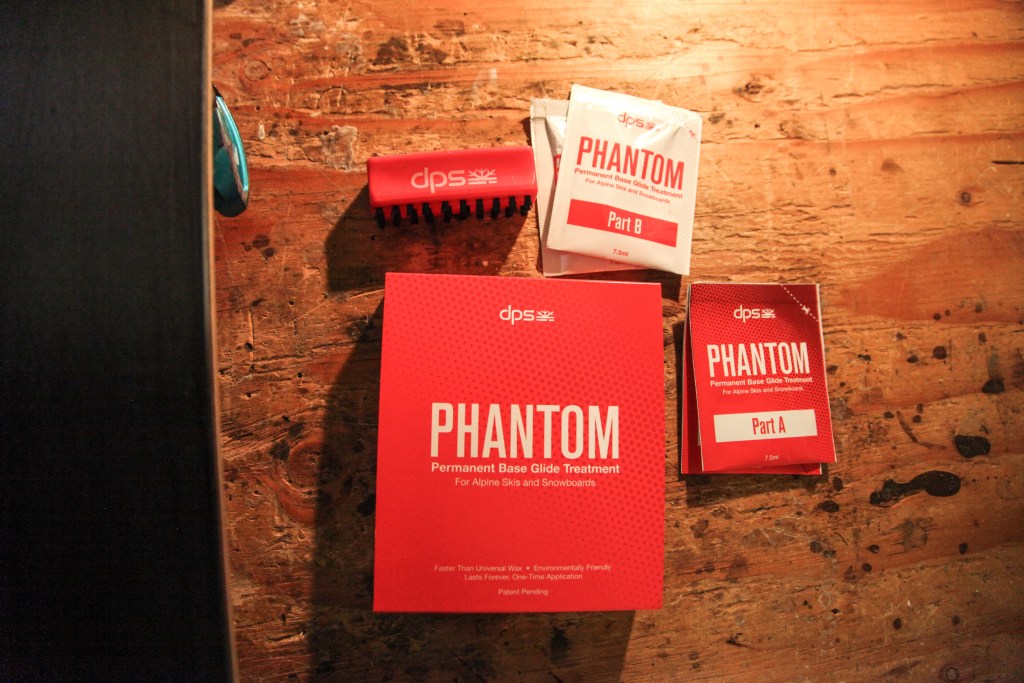DPS launches new technology that will eliminate the need for ski wax. This is hardly the first time the Utah ski brand has come up with a radical idea.
It was January 2015 when Stephan Drake opened the email from his mother that would inspire a groundbreaking new ski technology. Sitting in his office, Drake, the founder of DPS, a Salt Lake City-based ski manufacturer, clicked on the email’s link and began reading a story about a group at the Massachusetts Institute of Technology working on a new type of lubricant. “One that you could use to, say, coat the inside of a ketchup bottle so that the ketchup could slide right out,” Drake explains.
It got him thinking: Would it be possible to create something that could be applied to the base of your skis to make them permanently slippery? Something that could replace wax, so you’d never have to bust out a tuning iron again?
Drake began poking around and ultimately discovered the answer right in his own backyard. He came across Jeff Bates, a professor at the University of Utah who had done work on the creation of high-end plastics. Drake figured that, since ski bases are made of plastic, Bates could help. “I met with him and said, ‘We’re looking for a permanent coating that will rival an all-temperature ski wax, an alternative to wax,’” says Drake.
“I think I can make this work,” Bates said.
After 13 months and 40 prototypes, Bates discovered a formula that did, in fact, work. A rub-on liquid polymer that permanently bonded to the base of any ski, which Drake named Phantom. “Even if you stone grind your skis, it doesn’t come off because it penetrates into the pores of the base material,” says Drake.

An early look at DPS Phantom. (Photo Credit: Megan Michelson)
On November 1, 2017, Drake launched the product with a Kickstarter campaign, with a goal of raising $35,000. “We decided to crowdfund because we felt it was a good way to broaden the awareness of it,” he says. For donating to the campaign, backers received a small discount on one batch of Phantom, which retails for $99. By the end of the one-month-long campaign, Drake had raised more than $290,000 and found himself with a good problem. “We’re having trouble keeping up with demand,” he says.
REI plans to offer Phantom application as a service in select snow shops for the 2018-2019 season. Nate Nielsen, shop operations senior manager at the co-op, says Phantom is a significant development for ski and snowboard maintenance.
“It’s a realm that has not really changed. There have been modifications but not a totally different approach. This is a totally different approach to having your skis perform well,” Nielsen says.

Stephan Drake, founder of DPS. (Photo Credit: Oskar Enander)
Of course, producing industry-disrupting ski gear is nothing new for Drake. The New York City native graduated from Colorado College in 1999 and started working as a ski guide in Colorado, as well as picking up odd jobs such as painting houses, gardening and bussing tables.
In 2001, he met Neal Beidleman, a mountaineer and climbing guide, and the two began working on a new binding plate that would let you mount race bindings to your skis and still enable you to go for a backcountry tour, a radical concept at the time. They eventually sold the development rights of the plate to Backcountry Access. “We worked on it for eight or nine months,” says Drake. “It gave me a taste of that life.”

Inside DPS’s Utah headquarters. (Photo Credit: Dan Pizza/DPS)
Drake started DPS (short for Drake Powderworks) in 2005 with an eye on powder skiing. “There were really only European brands making skis and they weren’t producing anything up to the style of riding that we wanted to do,” he says. “We wanted to be in deep snow and riding on top of it like snowboards. We wanted the floatation that snowboards provided.”
Drake also wanted to incorporate carbon fiber into his designs, something that wasn’t being utilized in alpine skiing. “We’d seen how carbon fiber had revolutionized other sports,” he says. “We wanted to do the same thing for skiing.”
Finally, he wanted to bend the skis upward to provide more float. It was technology that he (and a few other companies at the time) had borrowed from the world of surfing, but Drake was the only one to also use that sport’s terminology: rocker, which is now ubiquitous in the industry.

An early DPS ski, with a unique tail shape. (Photo Credit: DPS)
Drake’s first ski, the Lotus 138, which combined rocker and sidecut, was radical at the time. Now it’s the industry standard for powder skis. The Spoon, which debuted in 2011, was even more unique. It not only employed full rocker but also had edges that curved upward, imbuing it with even more float and smear.
“Their timing was spot on,” says Joe Cutts, longtime ski test director for SKI magazine. “They were pioneers in the move to making lighter skis using carbon. A lot of companies followed that lead. And credit to them for taking chances with shape.”
Drake is far from done. In two years, he plans to release DPS’s first ski boot, which he’s staying mostly quiet about. “Everything about it is different than a normal ski boot,” he says. “It’s fairly radical.”
